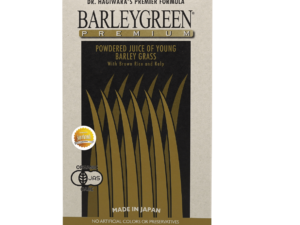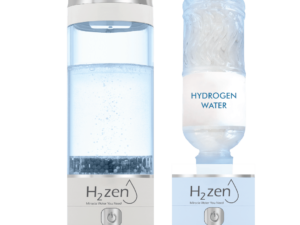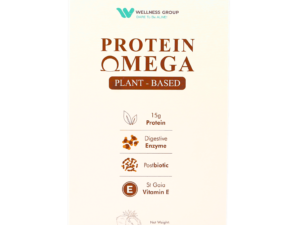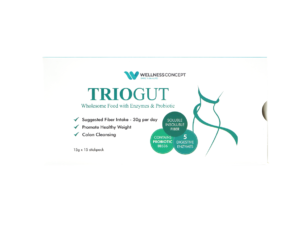One striking fact: recent clinical reports showed a measurable improvement in quality of life among cancer patients who used hydrogen-rich water during radiotherapy.
The Wellness Group gathers expert views to explain what that finding means for prostate care in Malaysia. They outline where bench research on cells meets patient choices. The team frames this topic as a supportive approach, not a cure.
Readers will learn why a tiny molecule may target specific radicals linked to oxidative stress while sparing normal signaling. That distinction helps explain possible effects on cell-level biology and wider cancer pathways.
Wellness Group guides families and patients advanced in their care with clear, evidence-informed advice. To book a conversation, contact WhatsApp +60123822655. Business hours: Mon–Fri 9:30 am–6:30 pm; Sat–Sun 10 am–5 pm.
Key Takeaways
- Experts see promise but call this a supportive therapy, not a standalone cure.
- Small molecules may reach cellular compartments linked to oxidative stress.
- Clinical reports showed quality-of-life gains during radiotherapy.
- Further prostate-specific trials are needed for clear clinical guidance.
- Wellness Group offers local support and evidence translation for patients.
User Intent and Why This Topic Matters in Malaysia
Many Malaysians search for clear, evidence-based explanations when supportive therapies intersect with standard cancer care. “Patients and families want safe, practical options,” clinicians often say.
Local diets and rising metabolic syndrome rates influence oxidative stress in prostate tissue and other organs. Malaysian research has highlighted links between ROS, diet, and pathway changes that may affect disease risk and progression.
Common user goals include understanding safety, everyday use, and expected effects when adjuncts are combined with oncology or urology treatment. Caregivers also compare notes across conditions, such as lung cancer, when weighing choices.
Clinicians increasingly check google scholar reviews after patients advanced in their journey ask about complementary options. Readers should bring specific questions to appointments: medication interactions, timing, and monitoring plans.
- Key intents: safety, practical use, realistic effects.
- Focus on lifestyle, sleep, and diet together with targeted adjuncts.
- Contact Wellness Group via WhatsApp +60123822655; business hours: Mon-Fri 9:30 am-6:30 pm; Sat-Sun 10 am-5 pm.
Expert Roundup: What Clinicians and Researchers Say About Hydrogen and Prostate Health
A panel of oncologists, urologists, and laboratory scientists weighed recent reports and highlighted where early signals look promising and where evidence remains thin.
Consensus themes from oncology and urology advisors
Advisors agree that selective scavenging of hydroxyl radicals and peroxynitrite offers a plausible mechanism to reduce oxidative stress in tumor microenvironments.
Clinical studies reported improved quality of life during radiotherapy and protection from cisplatin toxicity without lowering antitumor activity. The panel noted favorable tolerability and no clear interference with standard chemoradiation in published cohorts.
Where opinions diverge on efficacy and use cases
Experts differ on the magnitude of disease-specific benefit. Some oncologists view this as a supportive option for patients advanced in care to manage fatigue and redox-related symptoms.
Urologists may consider it in survivorship plans that target inflammation and local oxidative pathways. Researchers urge randomized trials that measure tumor endpoints and validated biomarkers.
- Evidence sources: cell and animal work, small human cohorts, and selective google scholar reviews show heterogeneity in dosing and endpoints.
- Practical note: shared decision-making is essential so adjuncts complement, not replace, standard treatment.
Need a tailored discussion? Contact Wellness Group on WhatsApp +60123822655; hours Mon-Fri 9:30 am-6:30 pm; Sat-Sun 10 am-5 pm for expert consultations.
Is hydrogen water good for prostate?
Clinician reviewers distilled the evidence into a clear, practical answer about adjunctive use and safety.
Short answer from the expert panel
Panel summary: the treatment may be a reasonable, well-tolerated adjunct in supportive oncology and survivorship when overseen by clinicians, but it is not a replacement for standard medical care.
How this aligns with oxidative stress science
Mechanistic data show dissolved gas can reach ~1.6 ppm and selectively scavenges hydroxyl radicals and peroxynitrite. This fits models where damaging radicals drive tissue injury and altered signaling in prostate biology.
Clinical signals come from supportive care studies that reported improved quality of life during radiotherapy without reducing anticancer effects. Google Scholar reviews show mechanistic plausibility, but prostate-specific outcome trials remain limited.
- Likely benefits: symptom relief and redox balance rather than guaranteed tumor regression.
- Key cautions: individualize dosing, align with oncology teams, and monitor biomarkers when possible.
- Wellness Group offers evidence-informed guidance—contact WhatsApp +60123822655 during business hours for a personalized discussion.
Reactive Oxygen Species, Reactive Nitrogen Species, and the Prostate
Oxidative and nitrosative chemistry shape the prostate microenvironment and influence disease pathways. Short-lived radicals and small molecules act locally to alter DNA, proteins, and signaling. This section outlines key players and why they matter in cancer biology.
From superoxide to hydroxyl radical: the ROS landscape
Central oxygen species include O2− (superoxide), H2O2 (hydrogen peroxide), and ·OH (hydroxyl radical). The hydroxyl radical is highly reactive and can directly damage DNA and proteins.
Hydrogen peroxide also serves as a signaling intermediate but can enter Fenton chemistry and yield ·OH near iron-rich sites. These oxygen species link metabolism and inflammation to harmful cellular effects.
Nitric oxide and peroxynitrite in chronic inflammation
Nitric oxide (NO) functions in normal signaling. Under stress, NO reacts with superoxide to form peroxynitrite (ONOO−).
Peroxynitrite amplifies tissue injury and sustains chronic inflammation. Reactive nitrogen species like ONOO− help explain persistent damage seen in some cancer settings.
Mitochondrial DNA vulnerability and cancer progression
Mitochondria produce large amounts of reactive oxygen during respiration. This activity risks harm to mitochondrial dna, which has less repair capacity than nuclear DNA.
Oxidative lesions such as 8-OHdG mark DNA damage and have been linked to cancer progression. Redox imbalance activates NF-κB and HIF-1α, altering growth, angiogenesis, and survival signals.
- Microenvironment note: prostate tissues reflect inputs from metabolism, inflammation, and external exposures.
- Cellular impact: increased ROS pushes cells toward genomic instability and altered signaling that can favor carcinogenesis.
- Biomarkers: 8-OHdG and related measures appear in google scholar reviews as indicators of aggressive biology.
How Molecular Hydrogen Works: Targeting Oxidative Stress Without Disrupting Signaling
Basic chemical studies show a small gas molecule can neutralize the most damaging radicals while leaving normal cell signaling intact. This selective action may help tissues reduce harmful oxidation without wiping out communication that cells need to function.
Selective scavenging of hydroxyl radicals and peroxynitrite
Key point: experimental data indicate the agent reduces ·OH and ONOO− but does not blunt superoxide, NO, or hydrogen peroxide signaling. That matters because many oxygen species are part of normal cell activity along the respiratory chain.
Gene expression and growth factor pathways potentially modulated
Early reports show modulation of pathways such as Nrf2, NF-κB, and Akt. These changes link to shifts in antioxidant gene expression and control of inflammation that may influence cancer and inflammatory diseases.
Implications for cell proliferation, protein kinase activity, and tumor necrosis signals
Indirect effects on protein kinase cascades can alter cell proliferation rates and stress responses. Actions are not cytotoxic but may change the microenvironment, reducing oxidative pressure that can drive tumor necrosis and dysfunction.
Antioxidant balance: superoxide dismutase, hydrogen peroxide, and respiratory chain
Studies report increased superoxide dismutase activity and lower lipid peroxidation markers like malondialdehyde. Mitochondrial localization supports radical detox where they form, which can assist respiratory chain efficiency under stress.
| Mechanism | Observed effect | Relevance to cells |
|---|---|---|
| Selective radical reduction | ↓ ·OH, ↓ ONOO− | Protects DNA and proteins from severe oxidative damage |
| Gene pathway modulation | Altered Nrf2, NF-κB, Akt activity | Shifts gene expression tied to antioxidant defense and inflammation |
| Antioxidant enzyme support | ↑ SOD, ↓ malondialdehyde | Improves redox balance and cell resilience |
- Clinical note: mechanistic findings appear in cell and animal work, with early human signals discussed in google scholar reviews.
- Practical view: these effects may complement standard care in cancer pathways, especially when teams monitor biomarkers and symptoms.
What the Literature Shows: From Cell Lines and Animal Models to Early Clinical Studies
Bench-to-bedside reports combine lab assays, animal data, and small human cohorts to map plausible benefits and limits.
Carcinoma cells and cancer cell lines: effects on ROS and invasion
In vitro work showed reduced reactive oxygen and lower invasion in several cancer cell lines. Studies reported inhibited proliferation and invasion in human tongue carcinoma cells and fibrosarcoma cell lines.
Cell-level assays also noted shifts in proliferation markers after exposure to hydrogen-rich media, suggesting anti-invasive potential without direct cytotoxicity.
Animal models: tumor progression, inflammatory diseases, and protective effects
Animal models demonstrated a protective effect against tumor progression. Nanobubble preparations affected Ehrlich ascites tumor cells, and saline forms reduced radiation-induced thymic lymphoma in mice.
Models of inflammatory disease repeatedly showed modulation of cytokines and redox pathways, supporting mechanistic links to cancer biology.
Clinical signals: supportive care in radiotherapy/chemotherapy and quality of life
Early clinical studies reported improved quality of life during liver tumor radiotherapy and less cisplatin toxicity without reduced antitumor activity.
Cohorts using inhalation in colorectal and lung cancer showed signals that merit larger trials. Findings in parkinson disease and metabolic syndrome add biological plausibility across redox-related contexts.
- Takeaway: preclinical work supports mechanisms; human data show symptom and QoL gains.
- Across google scholar reports, heterogeneity in dosing and delivery means standardized trials are a priority.
- For prostate application, mechanistic alignment exists, but targeted clinical studies remain necessary.
Prostate Cancer and Oxidative Stress: The Androgen and Diet Connection
Androgen-driven signals and diet interact to raise oxidative load in prostate tissue, shaping disease risk and recovery.
Androgen receptor, chronic inflammation, and increased ROS
The androgen receptor can boost reactive oxygen in prostate cells. This rise in oxidative stress links to later, therapy-resistant cancer states.
Chronic inflammation deepens the problem. Persistent inflammatory signals promote DNA damage and set the stage for cancer progression.
Dietary patterns, metabolic syndrome, and increased ROS
Diets high in saturated fat and refined carbohydrates raise systemic oxidative pressure. Metabolic syndrome further amplifies insulin and cytokine signaling.
These changes increase oxidative stress in prostate tissue and can worsen outcomes over time.
Pathways implicated: NF-κB, PI3K/Akt/mTOR, MAPK/ERK
Key pathways tie redox cues to growth. NF-κB, PI3K/Akt/mTOR, and MAPK/ERK respond to stress and control cell proliferation and survival.
Antioxidant defenses matter: lower glutathione and reduced GPx activity were reported in patient samples and link to higher oxidative damage.
- Takeaway: hormone, diet, and inflammation converge to raise oxidative stress in prostate tissue.
- Protein kinase and growth factor pathways translate redox shifts into malignant behaviors in cells.
- These insights point to combined approaches—lifestyle changes, medical care, and targeted adjuncts—supported by google scholar evidence and clinical interpretation.
Where Hydrogen Water Might Fit in Prostate Care Pathways
When teams design survivorship plans, they weigh adjunctive therapies by tolerability, evidence, and patient goals. This view helps place emerging supportive options into real-world care without disrupting standard cancer protocols.
Adjunctive wellness for patients advanced in disease and survivorship
Clinical use centers on symptom relief, energy, and redox balance for patients advanced in therapy and those in follow-up. Small human reports showed improved quality of life during radiotherapy and less chemo toxicity while preserving anticancer activity.
Practical note: clinicians often monitor outcomes and, when available, biomarkers to refine use and dosing.
Role alongside lifestyle change and conventional therapy
Adjuncts are best used with diet, exercise, sleep optimization, and stress management that together influence oxidative stress in prostate tissue.
Smart integration includes pharmacy review, timing around treatments, reliable product sourcing, and logging well-being metrics to guide adjustments.
| Use case | Evidence summary | Practical advice |
|---|---|---|
| Symptom relief in radiotherapy | Small clinical cohorts: improved QoL, reduced toxicity | Coordinate with oncology team; monitor symptoms |
| Survivorship and prevention planning | Mechanistic support in cells and animal work; limited prostate-specific trials | Combine with lifestyle changes and regular follow-up |
| Advanced disease inhalation studies | Early signals in advanced cohorts; more trials needed | Use under clinician oversight; log outcomes |
To book supportive care planning, contact WhatsApp +60123822655; business hours Mon-Fri 9:30 am-6:30 pm; Sat-Sun 10 am-5 pm. Wellness Group updates guidance as google scholar reports evolve.
Administration Options Reviewed by Experts
Delivery options were analysed for convenience, evidence strength, and alignment with ongoing cancer care. The team compared everyday approaches and clinic-based methods to help patients and clinicians make realistic choices.
Drinking water vs saline vs inhalation: practicality and evidence
Drinking water is the most practical daily route. Preparations that reach ~1.6 ppm must be stored correctly and consumed soon after opening.
H2-rich saline is a controlled clinical option. Under pressure it can retain >0.6 mmol/L and is used in animal models and select human settings.
Inhalation raises arterial and venous levels and has shown early signals in radiotherapy quality-of-life studies and some lung cancer cohorts. This route needs supervised delivery.
External applications and niche use cases
Bathing and topical drops have been explored in dermatology and ophthalmology. These uses show safety and potential local effects, though systemic results vary.
| Route | Evidence notes | Practical tip |
|---|---|---|
| Drinking water | Daily use; QoL signals in supportive care | Store in aluminium; drink soon after prep |
| H2-rich saline | Controlled dosing; animal models and clinic use | Clinic-only; not a home routine |
| Inhalation | Higher systemic delivery; lung cancer cohorts | Supervised sessions; monitor effects |
- Product choice matters: rapid diffusion means proper storage preserves concentration.
- Timing with treatment, hydration, and diet may influence perceived effects.
- Combined strategies (daily drinking water plus occasional supervised inhalation) can be discussed with clinicians.
- Ongoing google scholar reviews inform route-specific guidance tailored to patient goals.
Safety Profile, Tolerability, and Interactions
Safety reports across small cohorts and clinical studies show a reassuring tolerability profile. Most patients experienced no serious adverse events when adjunctive gas-based therapy was used alongside standard cancer care.
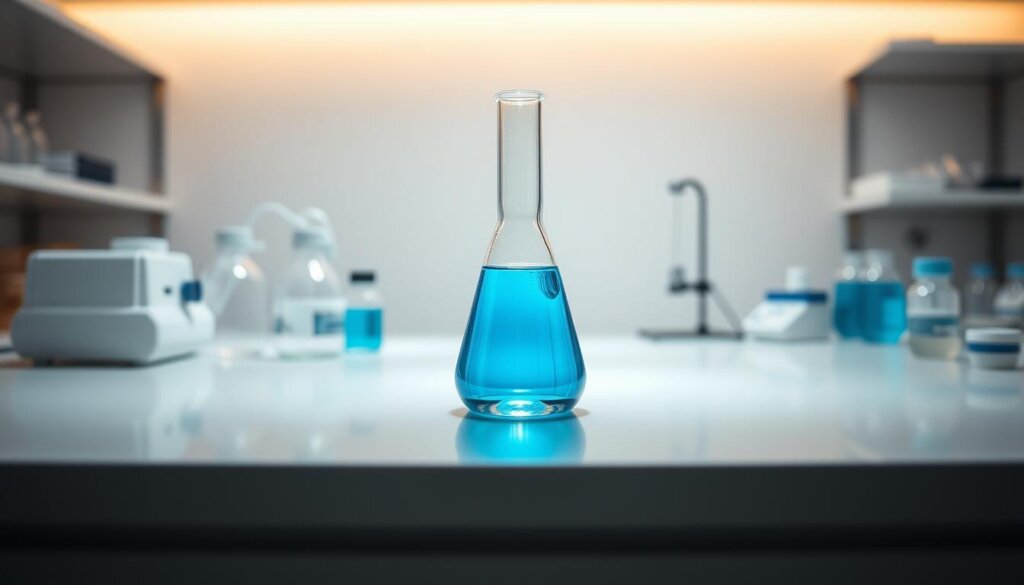
What studies report on adverse effects
Across drinking water and inhalation formats, side effects were minimal and transient. Minor complaints included mild bloating or throat dryness after sessions.
Biomarker trends supported a protective effect: studies recorded rises in superoxide dismutase and drops in malondialdehyde, consistent with lower oxidative stress in cells.
Does this compromise anticancer efficacy?
Evidence from cisplatin cohorts showed reduced kidney toxicity and less discomfort without loss of antitumor activity. Radiotherapy reports likewise noted improved quality of life and reduced oxidation markers while treatment effects remained intact.
| Setting | Safety summary | Key finding |
|---|---|---|
| Cisplatin chemotherapy | Well tolerated | ↓ nephrotoxicity; anticancer activity maintained |
| Radiotherapy cohorts | Minimal adverse events | ↑ QoL; ↓ oxidative markers |
| Daily drinking water use | Low side-effect rate | Boost in antioxidant enzymes |
- Interactions with medications appear unlikely, but timing around infusions is prudent.
- Clinicians individualize use for comorbid patients and monitor hydration and electrolytes.
- Patients should report unexpected symptoms promptly to their care team.
- Wellness Group integrates safety checks and continues to review google scholar updates to refine guidance.
Signals to Watch: Biomarkers and Outcomes
Practical monitoring gives clinicians objective data to guide adjunctive use and adjust plans for each patient.
Oxidative stress markers and superoxide dismutase activity
Key lab markers include reactive oxygen metabolites, malondialdehyde, protein carbonyls and myeloperoxidase.
Superoxide dismutase activity is useful to assess endogenous antioxidant response after adjunct use. 8-OHdG measures DNA oxidation and can signal redox damage in prostate tissue.
Quality of life, inflammation indices and gene expression readouts
Small trials reported improved quality of life during radiotherapy that tracked with lower oxidation indices. Composite inflammation oxidative stress scores capture systemic shifts.
Gene expression readouts linked to NF-κB and Nrf2 offer mechanistic insight in research settings and may help explain clinical effects on cells.
- Practical checks: use panels of oxidative markers and SOD activity to monitor response.
- Align outcomes with goals: symptom relief, function, and treatment tolerance.
- Track data longitudinally to spot responders vs non-responders.
- Consult recent reviews on related adjunctive use and google scholar to choose validated markers.
Research Gaps and What Future Clinical Studies Need to Prove
Translating cell and animal promise into clear clinical evidence requires focused, prostate-led trials. Current reports mix mechanistic data, small cohorts, and variable delivery methods. That heterogeneity limits conclusions about real patient benefit.
From promising mechanisms to prostate-specific randomized trials
The main deficit is a lack of adequately powered, randomized trials that target men with prostate disease and measure meaningful outcomes.
Standardizing dosing, delivery, and endpoints
- Agree on dosing (example: ~1.6 ppm drink or defined inhalation rates) and reporting so studies compare.
- Include tumor progression and cancer progression metrics plus validated oxidative markers such as 8-OHdG and SOD.
- Embed mechanistic substudies to measure gene expression and pathway shifts in cells.
- Stratify by treatment stage, hormone sensitivity, and metabolic risk; monitor safety and interactions.
- Use comparative arms and transparent reporting to enable meta-analysis in google scholar.
Malaysia Context: Access, Cultural Diets, and Patient Education
Local researchers and clinicians are translating lab findings into practical guidance suited to Malaysian diets and healthcare access.
Access matters: credible options and clinician oversight make safe adoption more likely. Community clinics and private centres offer review and product quality checks.
Patient education links cell-level science with daily choices. Clear advice covers diet, sleep, and activity alongside adjunct use. Simple explanations help people grasp how oxidative stress and chronic inflammatory signals may affect cancer risk and recovery.
Cultural diets can be adapted to lower inflammation oxidative drivers without erasing tradition. Team-based plans also address metabolic syndrome, which raises urgency for prevention and survivorship steps in Malaysia.
- Community focus: plain-language google scholar summaries help patients and caregivers.
- Local partnerships improve product quality control and storage education.
- Awareness drives should avoid overstatement and stress realistic supportive roles and documented effects.
Need tailored advice? Contact Wellness Group on WhatsApp +60123822655. Business hours: Mon–Fri 9:30 am–6:30 pm; Sat–Sun 10 am–5 pm.
How Wellness Group Guides Patients on Evidence-Informed Use
Wellness Group offers clear, patient-centered pathways that translate research into safe, practical plans. They emphasize shared decision-making so each person gets a plan that matches diagnosis, treatment stage, and goals.
Personalized discussions with clinicians
Initial assessment: clinicians review medical history, current treatments, and symptom priorities before recommending any adjunct. This step ensures safety and alignment with oncology or urology teams.
Evidence review: the team synthesizes google scholar reports and clinical signals—selective ROS/RNS targeting, QoL gains during radiotherapy, and no compromise of cisplatin efficacy—into practical advice for patients.
Integrating adjunct use within broader lifestyle and medical plans
Plans pair adjunct use with diet, exercise, sleep, and stress coaching. Prevention-minded patients get targeted cancer prevention advice that fits Malaysian lifestyles.
Care includes clear instructions on product sourcing, concentrations, storage, timing, and monitoring. Documentation templates track symptoms, function, and available biomarkers over time.
| Service | What patients receive | Why it matters |
|---|---|---|
| Personal assessment | Medication review, goals, safety check | Prevents interactions and tailors use to treatment stage |
| Evidence briefing | Summaries from google scholar and clinical reports | Provides realistic expectations based on the literature |
| Follow-up & monitoring | Regular check-ins, templates, biomarker tracking | Adjusts plans to improve tolerance and outcomes |
- The team coordinates with oncologists and urologists to ensure safety.
- For patients advanced in therapy, plans focus on tolerance, energy, sleep, and symptom relief alongside medical regimens.
- Accessibility by WhatsApp +60123822655 supports timely questions; business hours: Monday-Friday 9:30 am-6:30 pm; Saturday-Sunday 10 am-5 pm.
Contact Wellness Group: WhatsApp +60123822655 for Guidance
Reach out by WhatsApp to get a personalised review of evidence and options that align with your current cancer treatments.
What to bring: a brief summary of your diagnosis, current medications, supplements, and recent lab or imaging notes. This helps clinicians tailor advice to the cell-level and clinical context of your case.
What they provide: concise google scholar summaries on QoL, biomarkers, and administration routes; advice on reliable product options and safe storage; and coordination with your oncology or urology team when requested.

The team outlines practical monitoring approaches that fit clinic capacity. Expect clear next steps: scheduling, document sharing, and a short preparation checklist. Multilingual support and caregiver participation are available.
- WhatsApp: +60123822655
- Business hours: Mon–Fri 9:30 am–6:30 pm; Sat–Sun 10 am–5 pm
- Weekend hours accommodate busy schedules
| Service | Why it matters | How to prepare |
|---|---|---|
| Initial consultation | Aligns adjunct use with cancer care | Share diagnosis, meds, goals |
| Evidence briefing | Summarises google scholar findings | Request specific topics (QoL, biomarkers) |
| Follow-up plan | Monitoring and coordination | Agree on tests, timing, and clinician contacts |
Business Hours, Location Support, and Next Steps
Clear next steps and easy access to support make it simpler for people managing cancer to get timely, evidence-informed advice. Wellness Group helps patients and families prepare so consultations are efficient and actionable.
Monday–Friday: 9:30 am–6:30 pm; Saturday–Sunday: 10 am–5 pm
Use WhatsApp +60123822655 to book, reschedule, or request urgent assistance during operating hours. The team offers online and phone guidance to fit busy schedules in Malaysia.
How to prepare for your consultation
Bring concise documents: medication lists, recent labs, imaging, and any oxidative stress or antioxidant panels that show cell-level markers.
- Prepare questions about administration routes, dosing, and expected effects.
- If you track symptoms or QoL, bring recent logs to set baselines and goals.
- Request specific google scholar summaries or articles to review together.
- Clarify consent to coordinate with your medical team so advice aligns with oncology care.
Expect a written plan summarizing steps, safety notes, and follow-ups. Location support can include guidance on local sourcing and lab options to monitor cells and markers related to oxidative stress.
Conclusion
,Putting mechanistic findings and human quality-of-life signals side by side clarifies realistic expectations for patients and clinicians.
The evidence shows selective scavenging of ·OH and ONOO−, improved QoL during radiotherapy, and no loss of cisplatin efficacy. These effects align with oxidative stress science in prostate biology and cellular models, yet prostate-specific trials are still needed to confirm disease-modifying benefit.
Practical steps: integrate adjunct use with lifestyle measures and standard oncology care, monitor markers and symptoms, and seek clinician oversight. Readers can explore curated google scholar summaries and related resources such as the hydrogen-rich therapy review.
Wellness Group is available to translate evidence into a Malaysian plan. Contact WhatsApp +60123822655 (Mon–Fri 9:30 am–6:30 pm; Sat–Sun 10 am–5 pm) to discuss next steps.
FAQ
Is molecular hydrogen beneficial for prostate health?
Evidence is preliminary. Lab studies and some animal models show that molecular hydrogen can reduce harmful reactive oxygen and nitrogen species, lower markers of inflammation, and modulate pathways tied to cell proliferation. Clinical data specific to prostate outcomes are limited, so clinicians view it as a potential adjunct rather than a proven therapy.
How does molecular hydrogen affect oxidative stress and inflammation?
It appears to selectively neutralize highly reactive species such as hydroxyl radicals and peroxynitrite without blocking physiological signaling. That selective scavenging may help preserve antioxidant enzyme balance, including superoxide dismutase activity, while reducing oxidative damage linked to chronic inflammation.
Are there studies in prostate cancer cell lines or animal models?
Yes. Multiple in vitro studies show reduced reactive oxygen species, impaired invasion and proliferation in carcinoma cell lines. Animal experiments indicate slower tumor progression and lower inflammatory markers in some models. Translating those findings to human prostate disease requires controlled clinical trials.
Could it interfere with conventional cancer treatments like chemotherapy or radiotherapy?
Current reports generally find no clear evidence that molecular hydrogen undermines anticancer therapies; some small clinical signals suggest improved tolerability and quality of life during chemo‑ or radiotherapy. However, large, rigorous studies are needed to confirm safety across different regimens.
What delivery methods are available and which are practical?
Delivery options include drinking H2-enriched fluids, H2-rich saline in research settings, and inhalation of low-concentration gas. Drinking enriched fluids is the most practical for outpatients. Each method yields different exposure levels, and standardized dosing is not yet established.
Are there safety concerns or adverse effects reported?
Studies report good tolerability with few adverse events. Because molecular hydrogen is inert at low concentrations used in research, major toxicity is uncommon. Patients with serious lung conditions or those on complex oncology protocols should discuss use with their care team.
Which biomarkers should clinicians monitor if patients start using it?
Useful markers include oxidative stress indices (lipid peroxidation products, 8‑OHdG), antioxidant enzyme activity such as superoxide dismutase, inflammatory cytokines, and patient‑reported quality of life measures. Gene expression readouts for pathways like NF‑κB and PI3K/Akt may be informative in research settings.
Can lifestyle and diet affect outcomes when combining with molecular hydrogen?
Yes. Diets that reduce metabolic syndrome and chronic inflammation — for example, Mediterranean-style patterns — complement any adjunctive antioxidant strategies. Weight control, exercise, and controlling comorbidities remain central to prostate health.
What are the main research gaps before recommending routine use?
Key gaps include prostate-specific randomized trials, standardized dosing and delivery protocols, long-term safety data in cancer patients, and clear clinical endpoints such as progression‑free survival or symptomatic benefits in advanced disease.
How should Malaysian patients approach this option?
Patients in Malaysia should seek evidence‑informed advice from their urologist or oncologist. Wellness Group Malaysia emphasizes personalized discussions, integration with conventional therapy and lifestyle measures, and careful monitoring rather than unsupervised use.
